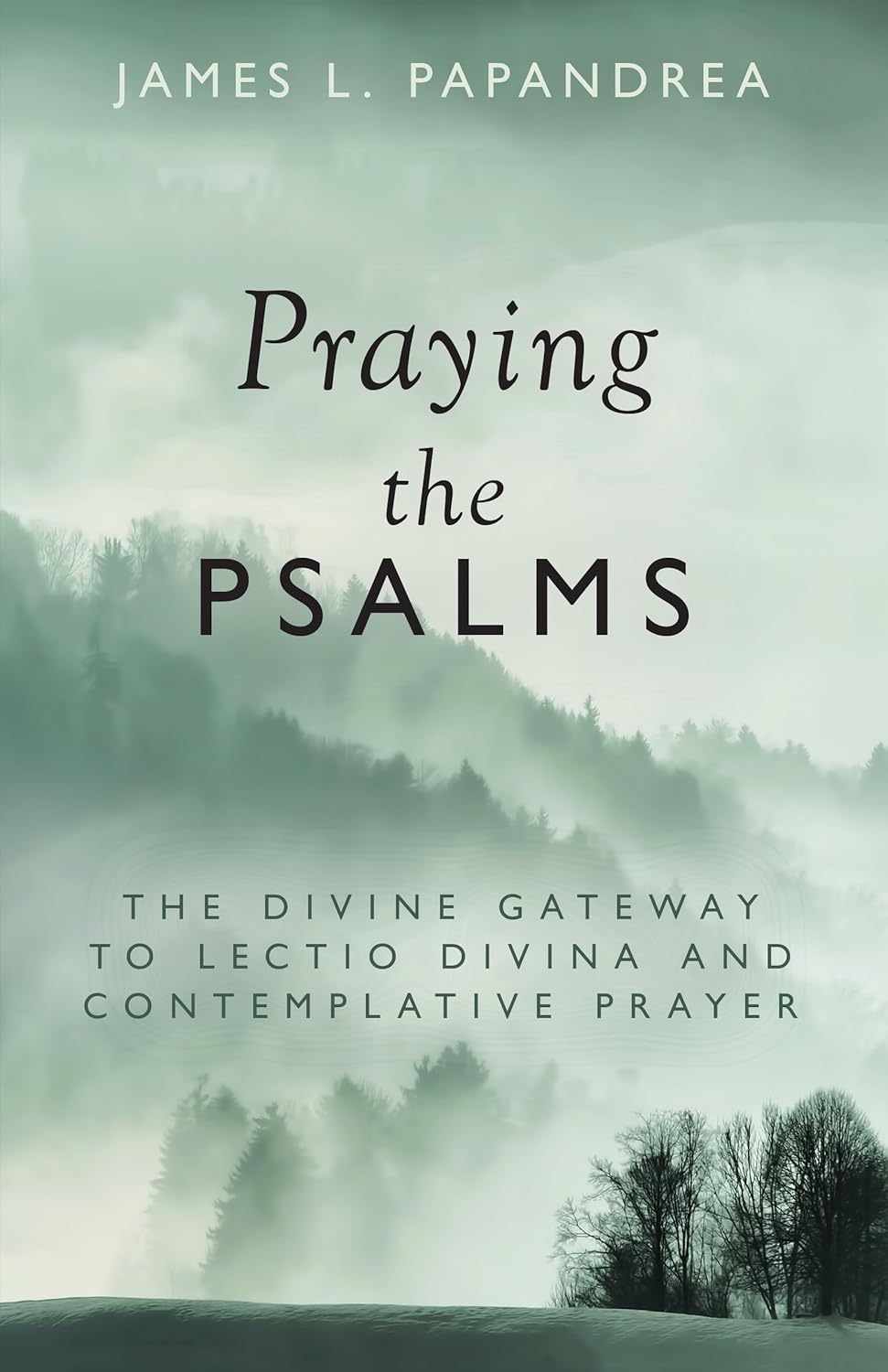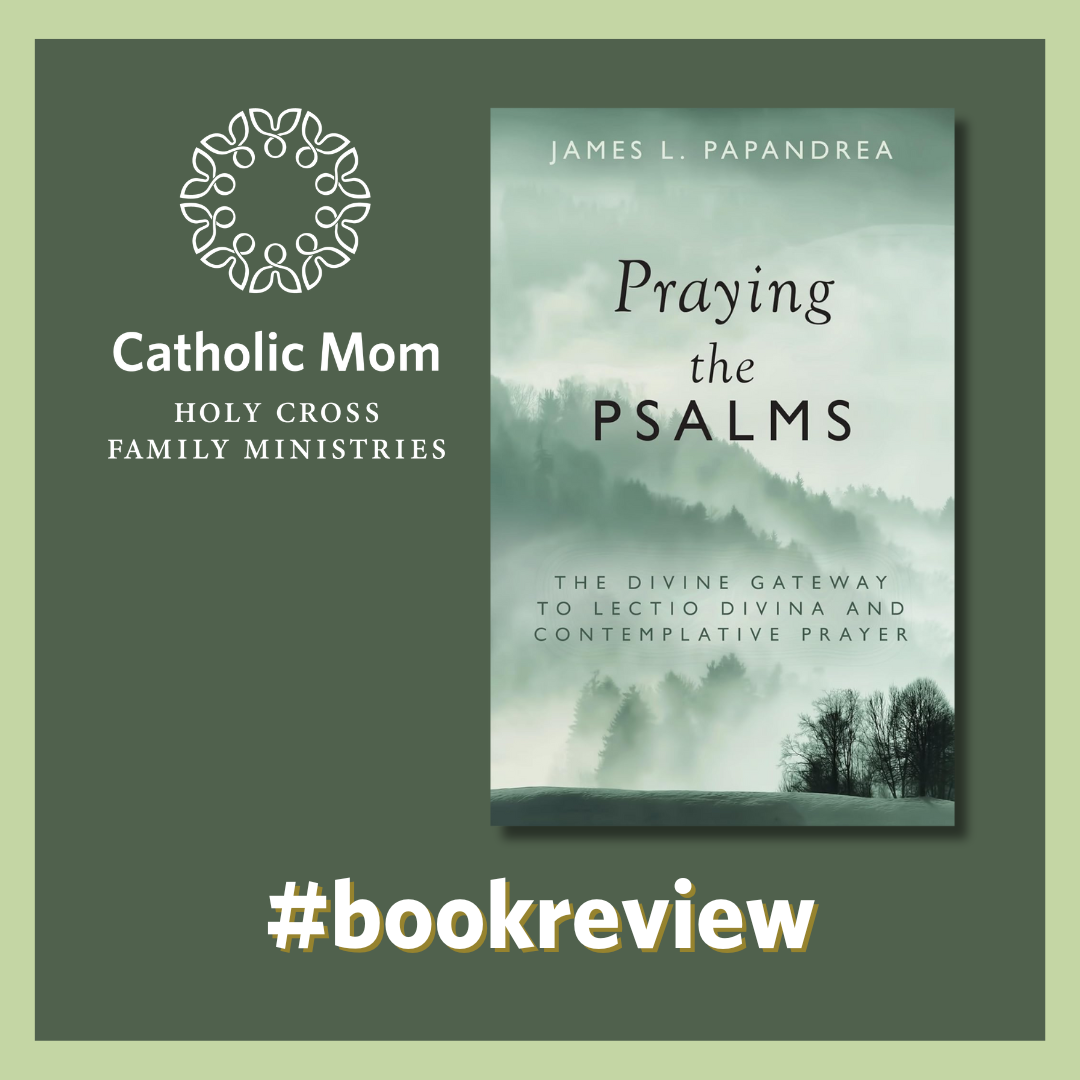
Karen Estep reviews a new book from Sophia Institute Press designed to help readers pray through the Psalms by using Lectio Divina.
James L. Papandrea’s new book from Sophia Institute Press, Praying the Psalms: The Divine Gateway to Lectio Divina and Contemplative Prayer, arrived in my mailbox at the perfect time. I am currently going through a pretty big discernment process and need something to help guide me through prayer. This book will guide you through the practice of Lectio Divina and draw nearer to God through contemplative prayer.

I love Lectio Divina and did not even realize it was a thing until last year’s Lenten season. I even did a whole podcast episode on my personal podcast, Stand, Kneel, Now What? that talks listeners through the process. I truly believe that Lectio Divina is a practice that all Christians, not just Catholic Christians, should be practicing.
Papandrea begins the book by explaining how to complete Lectio Divina. There are four steps in this process. The first step is called Lectio. During this step you simply read the passage to read it. Step two is called Meditatio. You reflect on what you have read, you can either focus on the passage as a whole or try to focus on something smaller that stood out to you while reading the passage. The third step is called Oratio. This is the step that you take to really reflect on that passage and turn it into prayer. The last step is called Contemplatio, and in this step you take just a couple of the lines to practice breathing prayers.
The next chapter of the book explains how Papandrea would like the reader to use this book. He also gives a bit of his linguistic background in this chapter. Papandrea created a new translation of the Psalms, taking into account the Latin, Greek, and Hebrew translations as well. He also encourages readers to not just take “his words” for your translation needs but to also consult your own Bible. Papandrea wants the reader to connect with the Psalms in a more worshipful way and has changed the language a bit to make it more “meaningful to contemporary English speakers.” I am glad that Papandrea has written down his very detailed approach to creating this book to the reader. After reading his reasoning on the shortened passages, how he changed some of the language after consulting many translations, and not putting in specific verse numbers, it helped me understand his approach and how to move forward with the rest of the book.
So, how did I approach the rest of this book? Well, the Table of Contents is an excellent resource in itself. Papandrea lists a few words about each psalm in the contents to help find something that you may need some prayer time with. I went through a few times and found some psalms that I felt God was calling me to look deeper into while going through my discernment process. “Guide Me In The Way I Should Go” is one that still stands out to me. This is a combination of Psalm 31 and 32. Papandrea even listed a suggested breathing prayer at the bottom of the page.
Overall, I like this book. I like the ease at which Papandrea has made Lectio Divina. I tend to grab for it late at night when I need an easier translation of the Psalms. I also really like that he has placed journaling pages alongside the psalm pages. This gave me time and space to write down what I was thinking after reading. I can see myself keeping this book on my nightstand for a quick contemplative prayer before bed or even one before starting the day.
The Bible is God’s guidebook for us a larger Christian community. However, we need to not forget that Scriptures are also individual love notes designed for us as well. If you are looking for a good place to start the wonderful practice of Lectio Divina, this book is a good place to start your Lectio Divina journey.
Ask for Praying the Psalms at your local Catholic bookseller, or order online from Amazon.com or the publisher, Sophia Institute Press.
Is this a book you'd like to read? Share your thoughts with the Catholic Mom community! You'll find the comment box below the author's bio and list of recommended articles.

Copyright 2024 Karen Estep
Images: Canva
About the Author

Karen Estep
Karen Estep is the host of the podcast Stand, Kneel, Now What? In coming home to the Catholic faith as an adult she hopes to share her love of the Church on a daily basis. Karen has been shown many graces through the Sacraments even through all of her blunders. She hopes to help other adults navigate their faith journey as well.


.png?width=1806&height=731&name=CatholicMom_hcfm_logo1_pos_871c_2728c%20(002).png)
Comments